

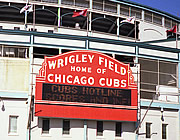
It really is windy! Freezing down by the lake when we visited but the views from the top of the Sears Tower are fantastic.
Blue Chicago and Wrigley Field were both highlights, and we made a special trip to Oak Park to see the early prairie-style Frank Lloyd Wright homes.
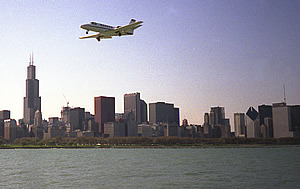
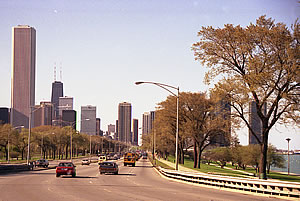
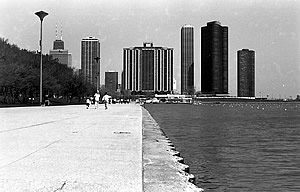
A short break which got off to a rather uncertain start. An hour down the road from St. Paul and I discovered I'd left my bag at work so we had to turn round and go back! We spent the night in Madison on the way - not very memorable.
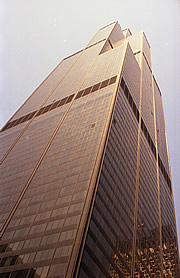
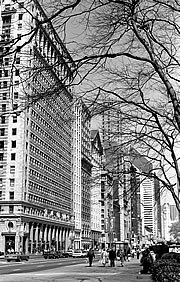
We arrived in Chicago quite early in the day. The city sits on the shore of Lake Michigan - a huge body of water which looks more like a sea as the farther shore is not visible from ground level! At lakeside you really understand why this is the "windy city" - when we visited the wind off the water made it bitingly cold.
The city has a long history. First settled in 1781 at the mouth of the Chicago River for its strategic position as a trading post, it was incorporated as a town in 1833 and a city in 1837, its engineers reversed the flow of the Chicago river so that the lake was no longer polluted in the late 1800s. This must have made a huge difference both to the health of the city and to its atmosphere as all the city waste used to be discharged into the lake!
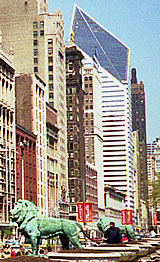
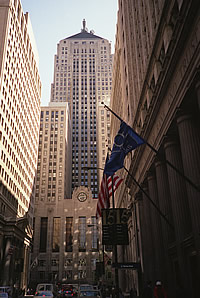
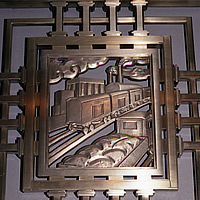
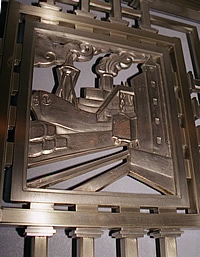

Most of the city was destroyed in the Great Chicago Fire of 1871 but this led to a great building programme and renewal of the city's fortunes.The rising land prices led to experimentation in building up and the first skyscraper - of nine storeys - was built here in 1885. In 1974 the Sears building was completed and, until 1997, it was the tallest building in the world - 25 meters higher than the twin towers of the World Trade Centre in New York CIty.
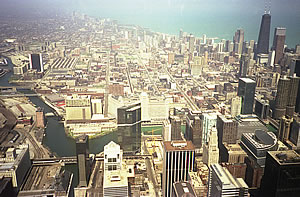
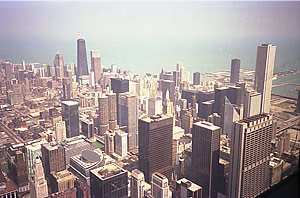
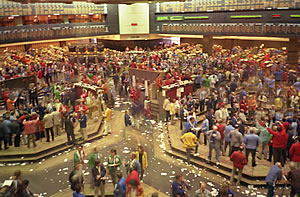
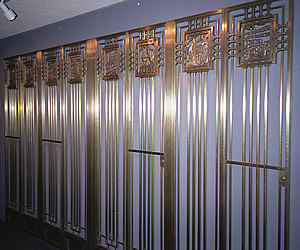
Gorgeous sunny days but a bit cold for the lakefront. A trip to the 103rd floor of the Sears Tower gives fantastic views across the city and lake.
One afternoon we visited the 1930 Board of Trade building to watch the traders in the "pit" which was quite fascinating - it looked chaotic as the time for the final bell approached but I guess they knew what they were doing!
An added bonus was some fine original Art Deco pieces in the building, in particular some beautiful bronze gates illustrating the industrial, agricultural and transport associations of the city.
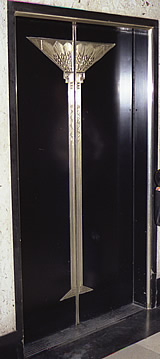

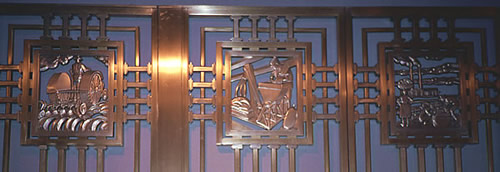
We couldn't come to Chicago and not go listen to some blues. Great names associated with Chicago Blues are Muddy Waters, Howlin' Wolf, Willie Dixon, Magic Sam, Buddy Guy, and Elmore James. One of the greatest blues record labels was Chicago's Chess Records. We went to Blue Chicago as Fodor's described it as "One of the city's best blues bars ..." and we we had a great time. It's a busy bar but a very atmospheric place to listen to the blues - people come to listen and socialise, not just to drink.
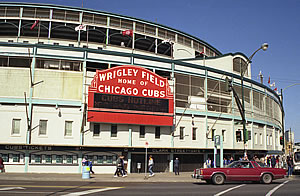
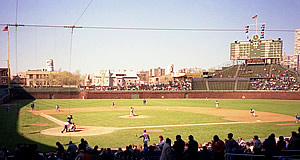
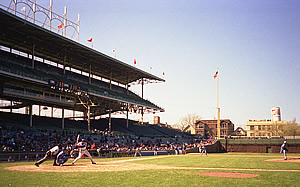
Chicago is a sport-mad city. All the major sports - basketball, football, baseball and hockey - are well-represented. They have two first rate baseball teams: the National League's Chicago Cubs and the American League's White Sox.
We both enjoy baseball and luckily there was a game at Wrigley Field while we were in Chicago: the Cubs vs the Montreal Expos.
Second in age only to the great Fenway Park, Wrigley Field was built in 1914. Originally called Weeghman Park it was renamed Wrigley Field in 1926 after the Wrigley family, of chewing gum fame, bought the team in 1920.
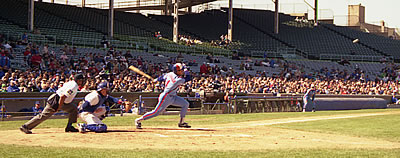
We thoroughly enjoyed the game, helped by lovely spring weather and the usual good-natured crowd. Unfortunately the Cubs suffered a 9-1 defeat!
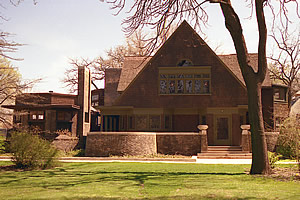
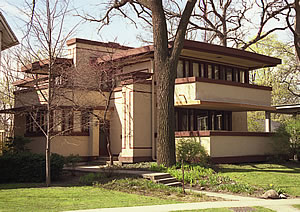
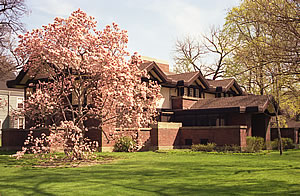
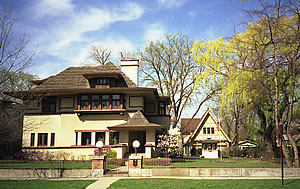
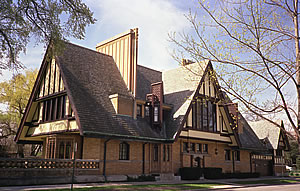
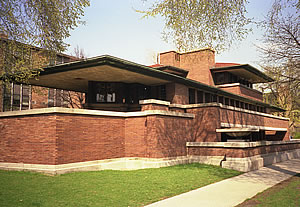
I'm a big fan of the architecture of Frank Lloyd Wright so was keen to visit Oak Park where he lived his early life and designed several homes.
In his early twenties Wright had moved to Chicago with his family. In Chicago he first worked for the architectural firm of Joseph Lyman Silsbee but left to work as an apprentice to Louis Sullivan in the firm of Adler & Sullivan. To support his growing family he designed a number of "bootleg" properties without the consent of his employers. When this was discovered he was asked to leave and so set up his own practice from home.
He had married his first wife Catherine in 1889 and bought land in Oak Park to the west of the city where he built his home.
His architectural philosophy, at least during this period, was to build organically, buildings which are one with their environment. This meant using mostly natural materials and keeping the buildings low and unobtrusive. It was dubbed "prairie style". He designed not only the exterior but also the interior layout of the rooms and furnishing - both fixed and free-standing such as light fittings, fireplaces, wall coverings, cabinets and dining tables.
Usually rooms connected openly - though, as he found out in his work, this is not conducive to the privacy required to run a business when there are six children in the household. Thus he extended his shingled "cottage" with its gabled roof and two polygonal bays with a studio comprising a full suite of rooms: reception, office, library and drafting room. The house had already been much extended to provide more space, including a barrel-vaulted playroom for the children which was also used for musicals and dramas and for a kindergarten run by his wife.
Many of his clients were friends, or part of his social circle. He even designed a Unity Temple when his own church - he was a Unitarian - was struck by lightning.
The Mrs. Thomas H. Gale house nearby was built in 1909 and is a harmonious design incorporating the horizontal planes typical of the prairie style but not in an extreme horizontal form. The rectilinear nature of the design was very unusual in its time and foreshadows later ideas of modern architecture.
The Peter A. Beachy house, just around the corner has unusual steep gables for a prairie house, but it is low and long, seeming to hug the ground. Wright took great care in the orientation of his buildings, this one being perpendicular to the street so that most rooms are south facing to catch the light and air with the overhanging gables providing shade from the fierce summer sun.
The Edward R. Hills house nearby is today a reconstruction from the original 1906 plans after a devastating fire in 1976. The building has elements of the prairie style with horizontal planes and clean lines.
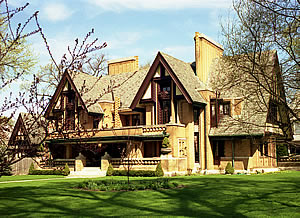
The Moore-Dugal residence (Nathan Grier Moore house) is another which has been rebuilt after a fire. The original building was Wright's first commission after leaving the Adler & Sullivan. This was not a prairie style but rather Elizabethan with half-timbering, steep roofs and tall chimneys. It burned down in 1922 and Wright was commissioned to build a larger, more decorative version of the original. The new chimneys are even more impressive. This house also shows that Wright was willing, at this stage of his career, to incorporate his client's wishes into his designs.
The epitome of the prairie style is Wright's Robie House, designed for Frederick C. Robie it has all of the characteristic attributes: long horizontal planes, gently sloping roofs, low and long.
The house is now owned by the University of Chicago and is on campus grounds to the south of the city.
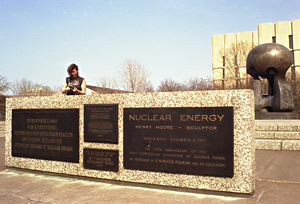
The university campus is also home to a sculpture by Henry Moore Nuclear Energy which commemorates the exact location where Enrico Fermi and his team achieved the first self-sustaining nuclear chain reaction initiating the controlled release of nuclear energy.
